-
 bitcoin
bitcoin $122288.232522 USD
0.16% -
 ethereum
ethereum $4480.662914 USD
-0.22% -
 xrp
xrp $2.962747 USD
-2.32% -
 tether
tether $1.000120 USD
-0.05% -
 bnb
bnb $1145.654223 USD
-2.07% -
 solana
solana $227.105217 USD
-1.67% -
 usd-coin
usd-coin $0.999548 USD
-0.02% -
 dogecoin
dogecoin $0.250875 USD
-2.04% -
 tron
tron $0.340654 USD
-0.49% -
 cardano
cardano $0.837968 USD
-2.52% -
 hyperliquid
hyperliquid $48.960449 USD
0.06% -
 chainlink
chainlink $22.049280 USD
-1.33% -
 ethena-usde
ethena-usde $1.000404 USD
0.02% -
 sui
sui $3.586212 USD
0.20% -
 avalanche
avalanche $29.894916 USD
-4.18%
What are stablecoins in DeFi?
Stablecoins in decentralized finance (DeFi) provide a stable medium of exchange and facilitate various financial activities, including yield generation and lending, while mitigating the volatility risks associated with cryptocurrencies.
Feb 15, 2025 at 04:36 pm
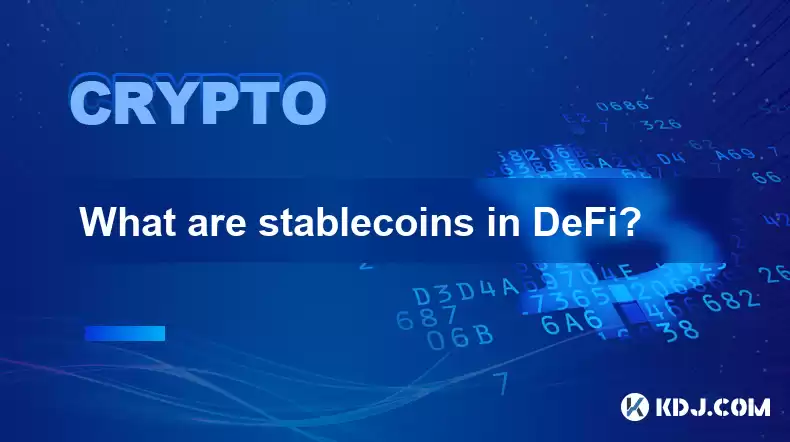
- Definition and purpose of stablecoins in DeFi
- Types of stablecoins: fiat-backed, crypto-backed, and algorithmic
- Advantages and considerations of using stablecoins
- How to choose the right stablecoin for specific use cases
- Potential risks and mitigation strategies associated with stablecoins
Stablecoins are cryptocurrencies designed to maintain a stable value against a fiat currency, such as the US dollar. They play a crucial role in the decentralized finance (DeFi) ecosystem, enabling various financial activities and mitigating price volatility common in the cryptocurrency market.
Types of StablecoinsThere are three main types of stablecoins, each with different mechanisms to maintain stability:
- Fiat-backed stablecoins: These stablecoins are backed by fiat currency reserves held in a custodian account. The issuer's transparency and financial stability are paramount for ensuring the stablecoin's stability. Examples include Tether (USDT), USD Coin (USDC), and Circle USD (USDC).
- Crypto-backed stablecoins: Collateralized by other cryptocurrencies, usually overcollateralized to mitigate volatility risks. MakerDAO's Dai (DAI) is a widely used crypto-backed stablecoin.
- Algorithmic stablecoins: Maintain their stability through algorithms that adjust supply based on market conditions. Ampleforth (AMPL) is an example of an algorithmic stablecoin.
- Reduced volatility: Stablecoins offer a stable value relative to fiat currencies, safeguarding against price fluctuations in the cryptocurrency market.
- Facilitating transactions:** Due to their stability, stablecoins are widely accepted as a medium of exchange for various transactions within DeFi platforms.
- Yield generation:** Some stablecoins offer yield-bearing opportunities, enabling users to earn interest on their assets.
- Collateral for borrowing:** Stablecoins can be used as collateral for lending and borrowing activities in DeFi protocols.
- Stability and reliability of the issuer: Look for stablecoins issued by credible entities with robust financial reserves and transparency practices.
- Collateralization and backing mechanism: Understand the underlying assets backing the stablecoin and the mechanisms used to maintain stability.
- Fees and transaction costs: Consider the fees associated with transacting and holding the stablecoin.
- Use cases and compatibility: Ensure the stablecoin is suitable for the specific use cases and compatible with the DeFi platforms you intend to use.
- Issuer risk: The financial health and stability of the issuer are critical for maintaining the stablecoin's peg.
- Market volatility: Although designed to be stable, stablecoins can still be subject to fluctuations during periods of market turmoil.
- Centralization: Some stablecoins have centralized management, raising concerns about the distribution of control.
- Regulatory uncertainty: The regulatory landscape for stablecoins is still evolving, which could impact their stability and acceptability.
- Q: What is the purpose of stablecoins in DeFi? A: Stablecoins provide a stable store of value, facilitate frictionless transactions, and enable yield-bearing opportunities within the decentralized finance ecosystem.
- Q: How do stablecoins maintain their stability? A: Fiat-backed stablecoins maintain value through reserves, crypto-backed stablecoins through overcollateralization, and algorithmic stablecoins through supply adjustments.
- Q: What are the risks of using stablecoins? A: Issuer risk, market volatility, centralization, and regulatory uncertainty are potential risks associated with stablecoins.
- Q: How do I choose the right stablecoin? A: Consider the issuer's stability, backing mechanism, fees, use cases, and compatibility when selecting a stablecoin.
- Q: What are the use cases of stablecoins? A: Stablecoins can be used for value storage, transactions, yield generation, and collateral for borrowing and lending in DeFi applications.
Disclaimer:info@kdj.com
The information provided is not trading advice. kdj.com does not assume any responsibility for any investments made based on the information provided in this article. Cryptocurrencies are highly volatile and it is highly recommended that you invest with caution after thorough research!
If you believe that the content used on this website infringes your copyright, please contact us immediately (info@kdj.com) and we will delete it promptly.
- BlockDAG, DOGE, HYPE Sponsorship: Crypto Trends Shaping 2025
- 2025-10-01 00:25:13
- Deutsche Börse and Circle: A StableCoin Adoption Powerhouse in Europe
- 2025-10-01 00:25:13
- BlockDAG's Presale Buzz: Is It the Crypto to Watch in October 2025?
- 2025-10-01 00:30:13
- Bitcoin, Crypto, and IQ: When Genius Meets Digital Gold?
- 2025-10-01 00:30:13
- Stablecoins, American Innovation, and Wallet Tokens: The Next Frontier
- 2025-10-01 00:35:12
- NBU, Coins, and Crypto in Ukraine: A New Yorker's Take
- 2025-10-01 00:45:14
Related knowledge

How to track DeFi activity on a block explorer
Sep 04,2025 at 05:36pm
Bitcoin's Role in Decentralized Finance1. Bitcoin remains the cornerstone of the cryptocurrency ecosystem, serving as both a store of value and a benc...
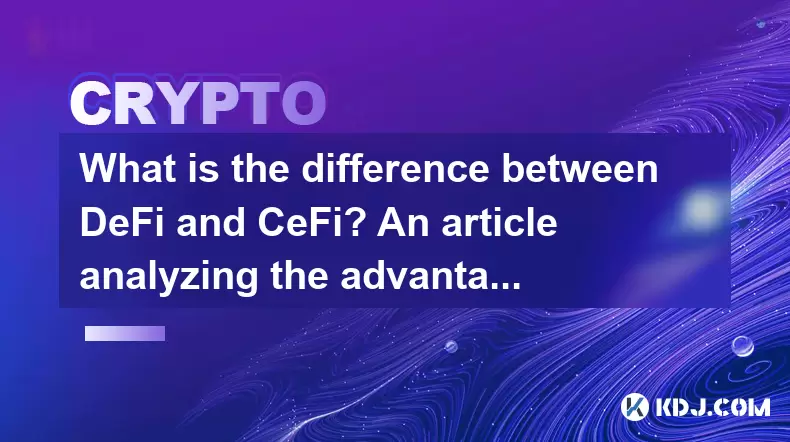
What is the difference between DeFi and CeFi? An article analyzing the advantages and disadvantages of both
Jun 13,2025 at 03:57am
Understanding the Foundations of DeFi and CeFiTo fully grasp the difference between DeFi (Decentralized Finance) and CeFi (Centralized Finance), it’s ...
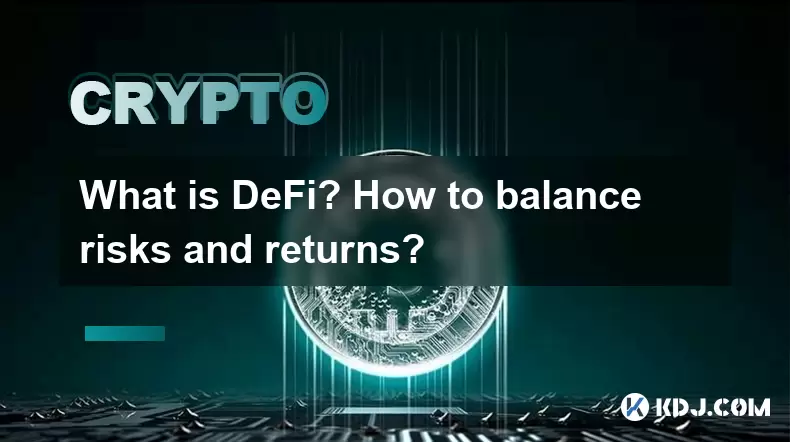
What is DeFi? How to balance risks and returns?
May 31,2025 at 12:22pm
What is DeFi? How to Balance Risks and Returns? Decentralized Finance, commonly known as DeFi, represents a revolutionary shift in the financial ecosy...
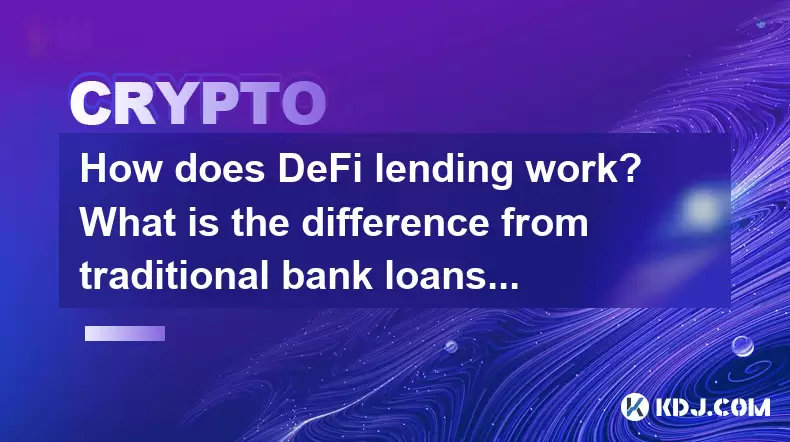
How does DeFi lending work? What is the difference from traditional bank loans?
May 29,2025 at 05:36pm
Introduction to DeFi LendingDeFi lending, or decentralized finance lending, represents a revolutionary shift in the way borrowing and lending are cond...
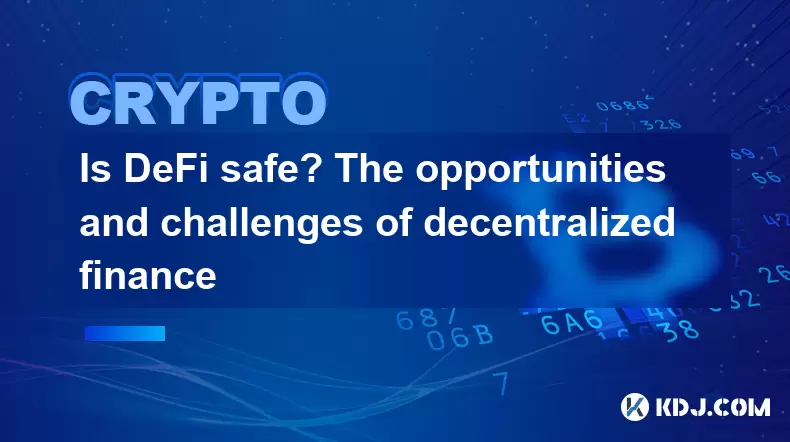
Is DeFi safe? The opportunities and challenges of decentralized finance
May 27,2025 at 02:28pm
Decentralized Finance, commonly known as DeFi, has revolutionized the financial landscape by offering a range of financial services without the need f...

DeFi Mining Tutorial: How to Maximize Profits and Reduce Risks?
May 27,2025 at 07:42am
DeFi, or Decentralized Finance, has opened up a new world of opportunities for crypto enthusiasts looking to maximize their profits through various mi...

How to track DeFi activity on a block explorer
Sep 04,2025 at 05:36pm
Bitcoin's Role in Decentralized Finance1. Bitcoin remains the cornerstone of the cryptocurrency ecosystem, serving as both a store of value and a benc...

What is the difference between DeFi and CeFi? An article analyzing the advantages and disadvantages of both
Jun 13,2025 at 03:57am
Understanding the Foundations of DeFi and CeFiTo fully grasp the difference between DeFi (Decentralized Finance) and CeFi (Centralized Finance), it’s ...

What is DeFi? How to balance risks and returns?
May 31,2025 at 12:22pm
What is DeFi? How to Balance Risks and Returns? Decentralized Finance, commonly known as DeFi, represents a revolutionary shift in the financial ecosy...

How does DeFi lending work? What is the difference from traditional bank loans?
May 29,2025 at 05:36pm
Introduction to DeFi LendingDeFi lending, or decentralized finance lending, represents a revolutionary shift in the way borrowing and lending are cond...

Is DeFi safe? The opportunities and challenges of decentralized finance
May 27,2025 at 02:28pm
Decentralized Finance, commonly known as DeFi, has revolutionized the financial landscape by offering a range of financial services without the need f...

DeFi Mining Tutorial: How to Maximize Profits and Reduce Risks?
May 27,2025 at 07:42am
DeFi, or Decentralized Finance, has opened up a new world of opportunities for crypto enthusiasts looking to maximize their profits through various mi...
See all articles










































































